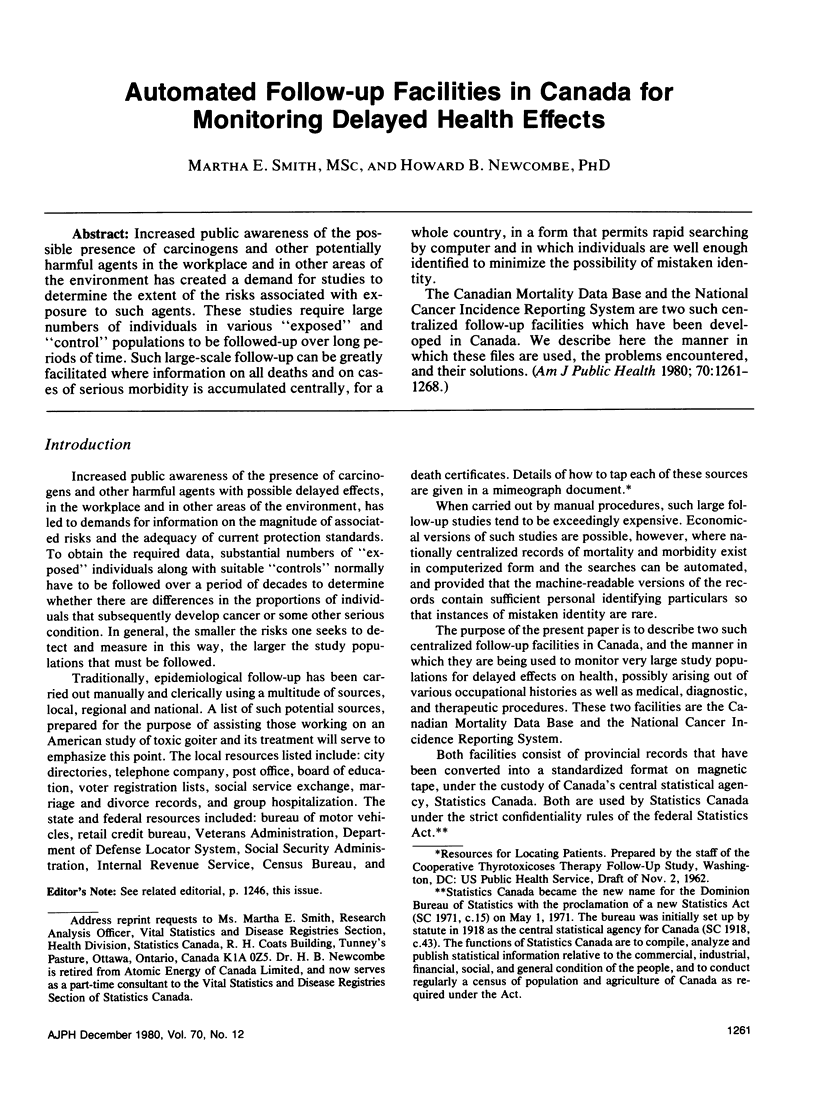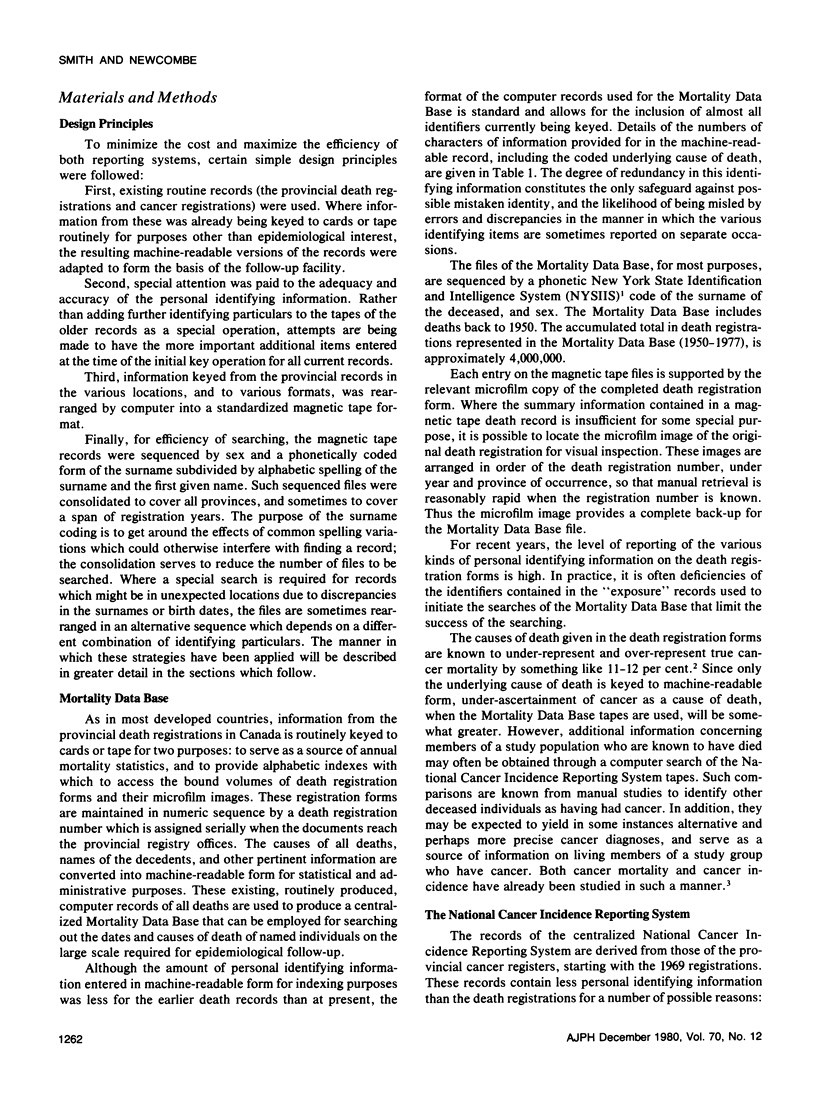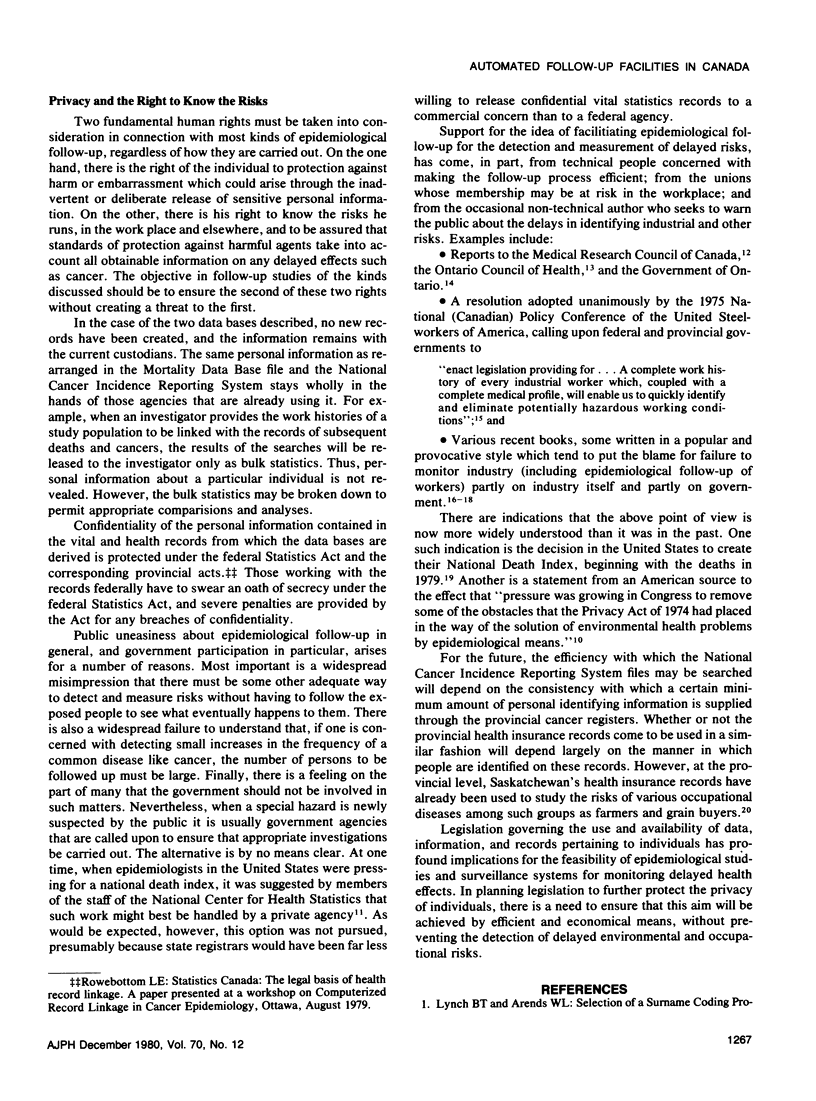Abstract
Increased public awareness of the possible presence of carcinogens and other potentially harmful agents in the workplace and in other areas of the environment has created a demand for studies to determine the extent of the risks associated with exposure to such agents. These studies require large numbers of individuals in various "control" populations to be followed-up over long periods of time. Such large-scale follow-up can be greatly facilitated where information on all deaths and on cases of serious morbidity is accumulated centrally, for a whole country, in a form that permits rapid searching by computer and in which individuals are well enough identified to minimize the possibility of mistaken identity. The Canadian Mortality Data Base and the National Cancer Incidence Reporting System are two such centralized follow-up facilities which have been developed in Canada. We describe here the manner in which these files are used, the problems encountered, and their solutions.
Full text
PDF







Selected References
These references are in PubMed. This may not be the complete list of references from this article.
- BARCLAY T. H., PHILLIPS A. J. The accuracy of cancer diagnosis on death certificates. Cancer. 1962 Jan-Feb;15:5–9. doi: 10.1002/1097-0142(196201/02)15:1<5::aid-cncr2820150102>3.0.co;2-7. [DOI] [PubMed] [Google Scholar]
- Chase H. C. Report on a national death index--pros and cons. Am J Public Health. 1972 May;62(5):719–723. doi: 10.2105/ajph.62.5.719. [DOI] [PMC free article] [PubMed] [Google Scholar]
- Howe G. R., Lindsay J., Coppock E., Miller A. B. Isoniazid exposure in relation to cancer incidence and mortality in a cohort of tuberculosis patients. Int J Epidemiol. 1979 Dec;8(4):305–312. doi: 10.1093/ije/8.4.305. [DOI] [PubMed] [Google Scholar]
- NEWCOMBE H. B., KENNEDY J. M., AXFORD S. J., JAMES A. P. Automatic linkage of vital records. Science. 1959 Oct 16;130(3381):954–959. doi: 10.1126/science.130.3381.954. [DOI] [PubMed] [Google Scholar]
- Smith M. E., Newcombe H. B. Accuracies of computer versus manual linkages of routine health records. Methods Inf Med. 1979 Apr;18(2):89–97. [PubMed] [Google Scholar]
- Smith M. E., Newcombe H. B. Methods for computer linkage of hospital admission-separation records into cumulative health histories. Methods Inf Med. 1975 Jul;14(3):118–125. [PubMed] [Google Scholar]
- Wagner G., Newcombe H. B. Record linkage. Its methodology and application in medical data processing. Methods Inf Med. 1970 Apr;9(2):121–138. [PubMed] [Google Scholar]


